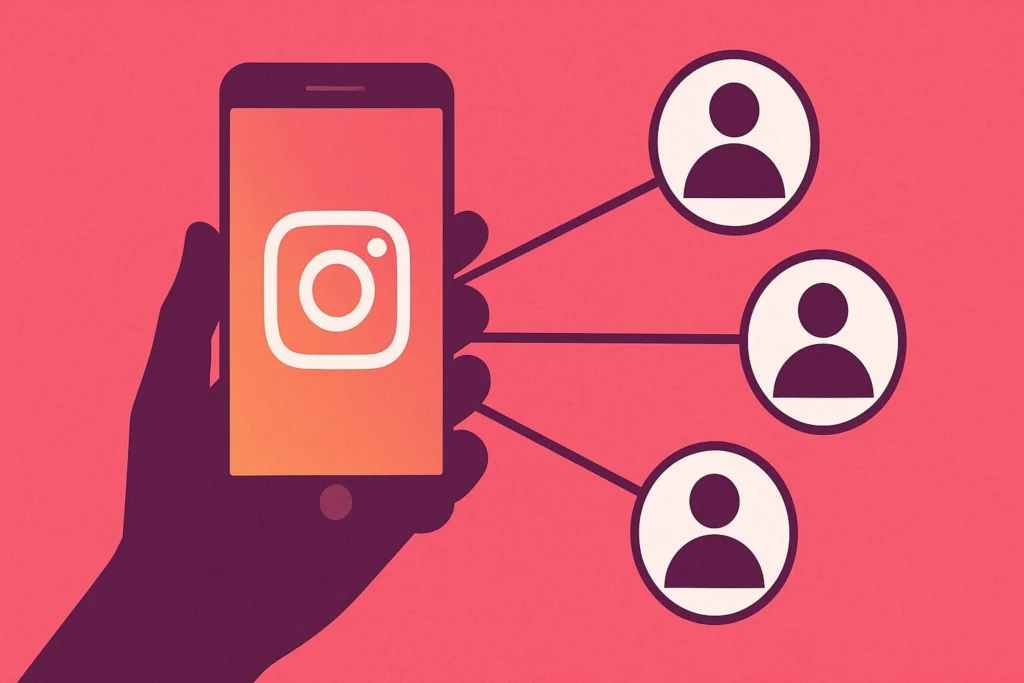Creating brand loyalty involves a strategic blend of emotional storytelling and personalized content. Authentic narratives forge emotional bonds, enhancing consumer trust and retention. Personalized messaging meets individual needs, boosting engagement by aligning brand values with consumer ethos. Engaging user-generated content fosters a community and amplifies advocacy. Consistent trust-building practices, like transparency and feedback incorporation, strengthen credibility. Measuring content effectiveness with KPIs guarantees strategies resonate and adapt to trends, like video and sustainability, maintaining relevance. Each key contributes uniquely to building a loyal customer base, paving the way for deeper insights into crafting loyalty through content.
Key Takeaways
- Utilize emotional storytelling to create authentic connections and enhance brand loyalty.
- Implement personalized content strategies to tailor messages for diverse customer segments.
- Incorporate user-generated content to boost engagement and build a community of brand advocates.
- Ensure transparency and consistently deliver on promises to build trust and credibility.
- Adapt to emerging trends, like video and interactive content, to maintain relevance and loyalty.
Understanding Brand Loyalty
Understanding brand loyalty is a essential component for any business aiming to establish a strong market presence. At its core, brand loyalty is defined by consumers’ unwavering preference for a specific brand, often resulting from exceptional customer experiences and emotional connections.
These connections are akin to personal relationships, deepening over time and fostering a sense of trust and reliability. Loyal customers, who are less susceptible to competitive offers, often become brand advocates, generating positive word-of-mouth which greatly enhances brand reputation.
Building trust is essential in cultivating brand loyalty. Through consistent engagement and delivering value, brands can create long-term relationships with their customers, ensuring customer retention even amidst market fluctuations.
Loyal customers demonstrate a tolerance for price changes, underscoring their deep attachment to the brand. This resilience acts as a protective barrier, safeguarding a brand’s market share against competitive forces.
Strategically, business leaders prioritize brand reputation and loyalty, recognizing its role in sustained profitability. By focusing on creating superior customer experiences and nurturing emotional connections, companies can not only retain their loyal customer base but also attract new customers, reinforcing their market presence and ensuring long-term success.
Emotional Storytelling Techniques
Emotional storytelling techniques are pivotal in forging strong connections between brands and consumers, as they effectively harness narratives that resonate on a personal level.
By weaving authentic brand stories that reflect genuine experiences and values, companies can cultivate trust and foster consumer loyalty.
This approach not only enhances brand recall but also encourages advocacy, with a significant portion of consumers more likely to recommend brands that engage through compelling storytelling.
Evoke Strong Emotional Connections
Incorporating emotional storytelling techniques into brand narratives can considerably deepen consumer engagement, with over half of consumers reporting heightened connection to brands that share personal stories.
This compelling storytelling approach not only fosters brand loyalty but also builds trust and credibility through authentic communication. By weaving engaging content with relatable experiences, brands can enhance customer engagement, as consumers are drawn to narratives that mirror their own values and beliefs.
Powerful visuals paired with storytelling amplify this emotional connection, with research indicating a 65% increase in retention rates. Such strategies guarantee that the brand message resonates on a profound level, creating valuable insights that lead to lasting relationships.
When stories reflect brand values, they cultivate a sense of community, with 70% of consumers favoring brands that align with their personal ethos.
Ultimately, emotional storytelling can drive a 20% boost in customer loyalty. By evoking strong emotional connections, brands not only engage but also create a loyal customer base enthusiastic to return for repeat experiences.
This strategic integration of storytelling in content creation is pivotal in shaping a brand’s identity and guaranteeing sustained consumer allegiance.
Utilize Authentic Brand Narratives
Crafting an authentic brand narrative is a strategic imperative for companies aiming to forge meaningful connections with their audience. Emotional storytelling techniques, leveraging relatable characters and real-life experiences, enable brands to evoke profound emotional responses, thereby building trust and customer loyalty.
By crafting authentic brand narratives that reflect the company’s core values and mission, businesses can greatly enhance credibility, resulting in a 90% increase in favorable customer perceptions as consumers align with the brand’s story.
Engaging storytelling not only creates memorable experiences but also transforms satisfied customers into brand advocates. With 79% of consumers willing to share a brand’s story if it resonates with them emotionally, companies can leverage this to broaden their reach organically.
In addition, incorporating visuals and imagery into narratives amplifies the emotional impact. Studies indicate that visuals can boost information retention by up to 65%, making the narrative more compelling and memorable.
Brands that effectively utilize these strategies can see customer retention rates soar by up to 23%, as the narratives resonate deeply with consumers.
Personalized Content Strategies
In the domain of brand loyalty, personalized content strategies stand as pivotal tools, with tailored messaging techniques and dynamic content delivery leading the charge.
By leveraging audience segmentation and data insights, brands can craft messages that not only resonate but also anticipate consumer needs, resulting in a 20% increase in sales conversions.
This precision in communication fosters genuine connections, ensuring that consumers feel valued and understood, thereby enhancing engagement and long-term loyalty.
Tailored Messaging Techniques
While the digital landscape evolves rapidly, personalized content strategies have emerged as a cornerstone for cultivating brand loyalty. Tailored messaging plays a pivotal role in enhancing customer loyalty, as it speaks directly to the individual needs and pain points of diverse audiences.
By leveraging audience segmentation, brands can craft personalized experiences that result in valuable content, fostering stronger customer engagement and building brand loyalty. Research indicates that personalization can drive a 20% increase in sales conversions, underscoring the importance of aligning content strategies with consumer preferences.
Ninety percent of consumers find personalized content appealing, emphasizing the need for brands to utilize data insights effectively. This approach not only enhances content relevance but also deepens customer relationships by nurturing trust and loyalty.
Implementing personalized loyalty programs that offer exclusive rewards and tailored messaging further solidifies these connections, encouraging ongoing interaction and retention.
The strategic use of tailored messaging guarantees that content resonates with different customer segments, providing a customized experience that strengthens brand affinity.
Dynamic Content Delivery
Leveraging the power of dynamic content delivery, brands can enhance their personalized content strategies to new heights. By integrating audience segmentation with dynamic content, businesses can craft tailored experiences that resonate deeply with individual consumers. This approach not only boosts customer engagement but also solidifies brand loyalty.
Automated email marketing stands out as a key tool, delivering relevant content that aligns with the specific needs and interests of different customer groups.
To effectively implement dynamic content delivery, consider the following strategies:
- Audience Segmentation: Divide your audience into distinct segments based on demographics, behavior, and preferences. This enables the creation of targeted content that speaks directly to the unique characteristics of each group, thereby increasing the value and relevance of the content delivered.
- Utilizing Data Insights: Harness data insights to understand customer pain points and preferences. This allows for the development of personalized content that addresses specific needs, enhancing the overall customer experience.
- Customer Feedback Integration: Regularly gather and analyze customer feedback to refine content strategies. This feedback loop guarantees that the content remains relevant and continues to foster a strong connection between the brand and its audience.
Engaging User-Generated Content
Integrating user-generated content (UGC) into a brand’s marketing strategy is more than just a trend—it’s a strategic imperative for fostering deep connections with consumers. By showcasing engaging user-generated content, brands enhance their authenticity, leading to significant improvements in brand loyalty.
With 79% of consumers reporting that UGC profoundly impacts their purchasing decisions, it’s clear that real customer experiences are invaluable in building trust. When brands incorporate these genuine insights into their content marketing efforts, they not only create a sense of community but also achieve a 50% increase in audience engagement on social media platforms.
Encouraging customers to share their experiences transforms them into active participants in the brand narrative, further solidifying their loyalty. UGC not only makes brands more relatable but also drives tangible results, such as boosting conversion rates by up to 10%.
This effectiveness stems from the authentic and credible nature of UGC, which consumers actively seek before making purchase decisions. As a strategic tool, user-generated content bridges the gap between brands and their audiences, creating a community built on shared, authentic experiences that resonate deeply and foster long-term brand allegiance.
Building Trust and Credibility
User-generated content has not only redefined authenticity but has also laid the groundwork for establishing trust and credibility. By leveraging the voices of satisfied customers, brands can illustrate their commitment to high-quality products and transparency.
Building trust starts with consistently delivering on promises. When customers experience reliability in both products and services, their confidence in the brand naturally strengthens, fostering brand loyalty.
To strategically enhance brand credibility, consider the following approaches:
- Transparency in Business Practices: Clearly communicate company values and processes. Transparency builds customer confidence and encourages long-term loyalty by assuring customers of the brand’s integrity.
- Engagement Through Feedback: Actively seek and respond to customer feedback. This not only demonstrates a genuine focus on customer needs but also refines the trust relationship by showing that their voices are valued and impactful.
- Showcase Customer Success Stories: Highlighting real-life success stories enhances credibility, as 88% of consumers trust online reviews as much as personal recommendations. These stories serve as powerful endorsements of the brand’s value.
Measuring Content Effectiveness
Understanding how to measure content effectiveness is vital for any brand seeking to forge lasting customer relationships. By identifying key performance indicators (KPIs) such as engagement rates and customer retention metrics, brands can evaluate how well their content strategies resonate with audiences. Leveraging analytics tools provides detailed insights into audience behavior, enabling brands to refine their content for enhanced loyalty.
A strategic approach involves utilizing A/B testing to experiment with different content formats and messaging. This method identifies which elements lead to effective content, allowing brands to optimize their strategies. Regular analysis of engagement metrics, including shares and comments, offers valuable feedback on content performance, driving data-driven adjustments.
Here’s a succinct breakdown of key metrics:
| Metric | Purpose | Example Tools |
|---|---|---|
| Engagement Rates | Measure interaction with content | Google Analytics |
| Customer Retention | Evaluate loyalty and repeat engagement | HubSpot |
| Customer Feedback | Gauge satisfaction and content impact | SurveyMonkey |
Tracking customer feedback and satisfaction scores is essential for evaluating content impact on loyalty. Through continuous monitoring and adaptation, brands can guarantee their content remains relevant and compelling, fostering enduring customer connections.
Adapting to Emerging Trends
In today’s rapidly evolving digital landscape, brands must deftly navigate emerging trends to maintain a competitive edge and foster deeper connections with their audience. Embracing these changes is vital for content creation that not only engages customers but also builds lasting brand loyalty.
Key trends shaping the marketing strategy include personalized content, which boosts sales conversions by 20%, and video content, predicted to account for 82% of all internet traffic by 2022. These strategies are essential in capturing the attention of modern consumers who crave relevance and dynamism.
To effectively adapt, brands should consider the following:
- Leverage Video Content: With its rising dominance, integrating compelling video content into marketing strategies can greatly enhance customer engagement and drive brand loyalty.
- Embrace Interactive Content: Utilizing quizzes and polls can increase engagement rates by 70%, providing a platform for fostering trust and facilitating meaningful customer interactions.
- Prioritize Sustainability: Aligning content with sustainable and ethical practices resonates with 55% of consumers willing to pay more for eco-friendly brands, reinforcing trust and loyalty.
Frequently Asked Questions
What Are the Key Points of Brand Loyalty?
Brand loyalty hinges on fostering customer connection through emotional engagement, consistent messaging, and trust building. Quality assurance, personalized experiences, community involvement, social responsibility, customer feedback, and compelling brand storytelling are pivotal in cultivating and sustaining enduring customer allegiance.
What Is the Key to Brand Loyalty?
The key to brand loyalty lies in fostering emotional connections through personalized experiences and consistent messaging. Building customer trust via community engagement, value alignment, brand storytelling, and responsiveness to customer feedback while implementing effective loyalty programs enhances trustworthiness and retention.
What Can You Do to Build Brand Loyalty?
To build brand loyalty, focus on customer engagement through emotional connection and consistent messaging. Implement personalized experiences, community involvement, and reward programs. Utilize feedback loops, guarantee quality assurance, and leverage brand storytelling to foster trust and lasting relationships.
What Are the Key Determinants of Brand Loyalty?
Key determinants of brand loyalty include exceptional customer experience, emotional connection, trust factors, brand consistency, community engagement, personalization strategies, quality assurance, responsive communication, value perception, and social responsibility, all contributing to sustained consumer allegiance and advocacy.
Conclusion
Crafting content that enhances brand loyalty requires a multifaceted approach, encompassing emotional storytelling, personalized strategies, and user-generated content. Establishing trust and credibility is paramount, while continually measuring content effectiveness guarantees alignment with brand goals. Adapting to emerging trends keeps content relevant and dynamic, fostering deeper connections with audiences. By integrating these elements, brands can cultivate a loyal customer base, ultimately driving sustained engagement and long-term success in an ever-evolving digital landscape.




